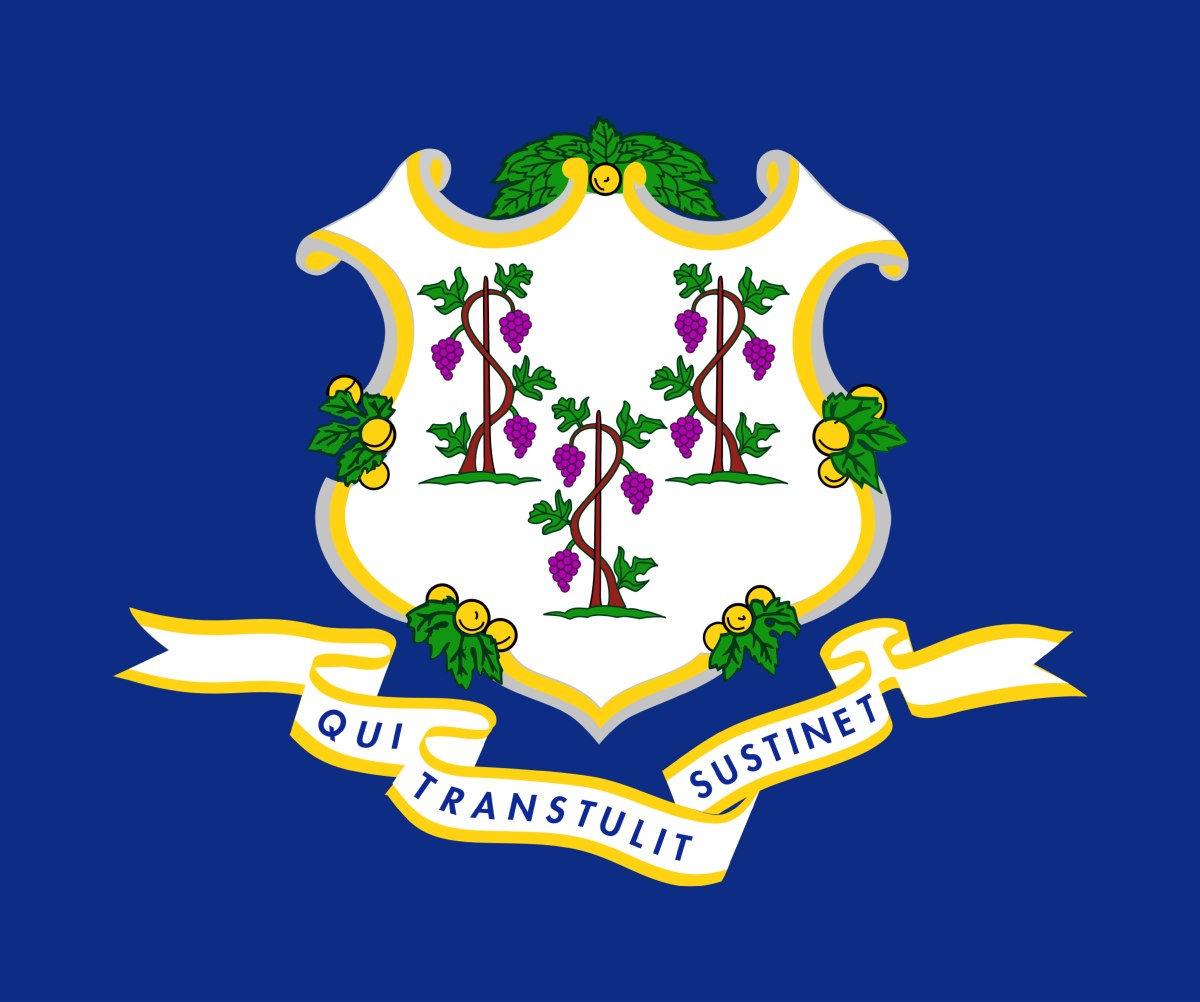Connecticut, famously known as the Constitution State, offers a rich blend of history, economic influence, and natural charm in the northeastern United States. As one of the original 13 colonies, it holds a significant place in the nation’s founding story. Though small in size, it ranks among the most densely populated states in the country. From its strategic location and deep historical roots to a thriving population and strong focus on education and sustainability, Connecticut stands out as a unique and impactful part of New England.
Let’s explore what truly sets this remarkable state apart.
Check out: Top 10 Richest States in the U.S.: Check the Rankings, Median Household Incomes and More
Why does the Connecticut flag have grapes?
The Connecticut flag features three grape vines and a ribbon bearing the Latin motto 'Qui Transtulit Sustinet' (He Who Transplanted Still Sustains) because the imagery is derived from the seal of the Connecticut Colony . The three vines represent the three oldest settlements- Hartford, Windsor, and Wethersfield that formed the original colony, symbolizing the transplantation of people and religious freedom from Europe to the New World. While the original seal used grapes to possibly symbolize the fruitful settlement or the people themselves, who were 'transplanted' like the vines, the motif has remained a historical reference to the colony's founding and its continuous growth and prosperity.

source: wikimedia.org
Where Is Connecticut Located on the Map?
Connecticut is situated in the northeastern corner of the United States and is one of the original 13 colonies. It shares its borders with Massachusetts (north), Rhode Island (east), New York (west), and the Long Island Sound (south). Despite being the 48th smallest state in area, it is one of the most densely populated.
Source: worldatlas.com
What is the Capital of Connecticut?
The capital of Connecticut is Hartford, which is located in the north-central part of the state. Hartford is one of the oldest cities in the United States, having been founded in 1635, and it has been the sole capital since 1875. Before that, it shared the capital duties with New Haven from 1701 to 1874.
Today, Hartford is especially known as the "Insurance Capital of the World" because it is home to the headquarters of many major insurance companies.
The city hosts the Connecticut State Capitol building , where the state's government and legislature meet.
What are the geological features of Connecticut?
Connecticut's geology is mainly divided into three north-south strips: the Western Uplands and Eastern Uplands, which are composed of ancient, hard metamorphic rocks (like schist and gneiss) formed by continental collisions that created the Appalachian Mountains hundreds of millions of years ago.
In between these two uplands lies the Central Valley, also called the Hartford Basin, which is a lowland rift valley formed when the supercontinent Pangea began to break apart; this valley is famous for its reddish-brown sandstone and the distinct, resistant ridges made of dark, volcanic rock called traprock.
Does Connecticut have good education?
Yes, overall, Connecticut has a very strong education system and is consistently ranked as one of the most-educated states in the U.S. In many studies, the state's public school system ranks among the top three nationally, often second only to Massachusetts, excelling in areas like student-to-teacher ratio, high ACT and AP exam scores, and high graduation rates.
Check out: Why Is Connecticut Called the Constitution State? Know the History, Significance, and Reason Behind the Title
Conclusion
Overall, Connecticut, being a geographically small state, punches far above its weight in terms of its historical significance, vibrant diversity, and pioneering spirit of innovation. From its pivotal role as one of the original 13 colonies and the birthplace of foundational democratic principles, earning it the moniker 'Constitution State' , to its leadership in the Industrial Revolution with inventions that reshaped the world, Connecticut has consistently left an indelible mark on America's story.
Comments
All Comments (0)
Join the conversation